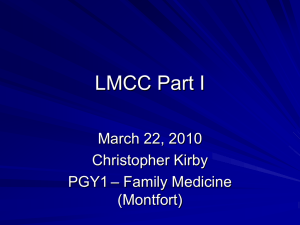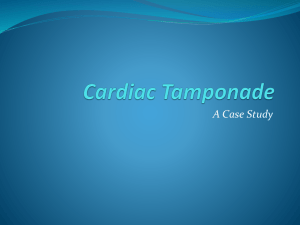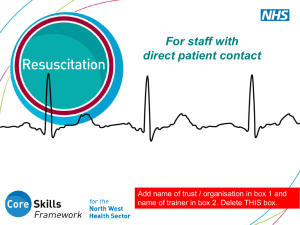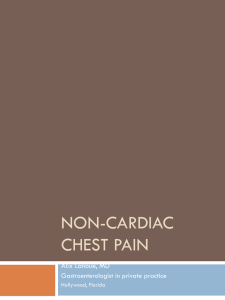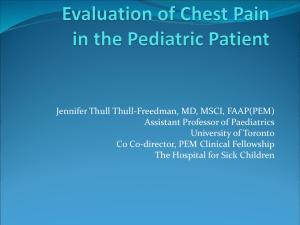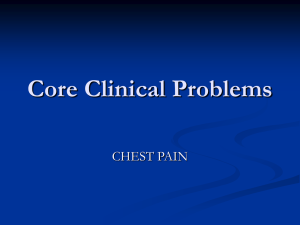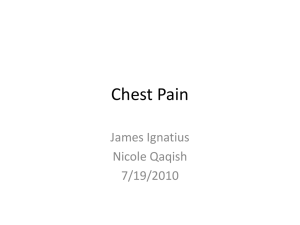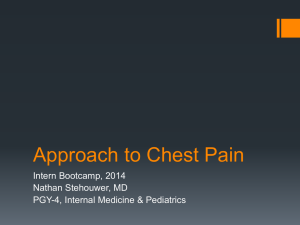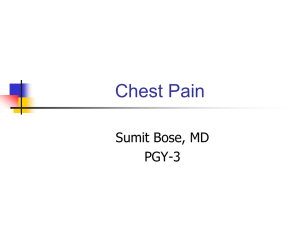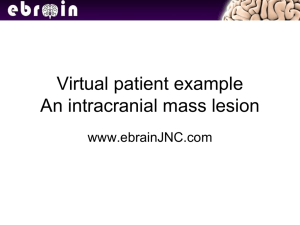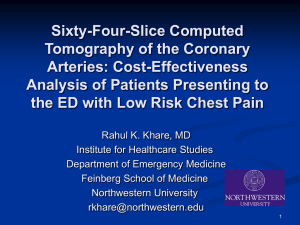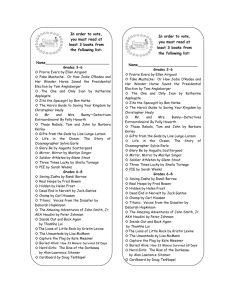Document
advertisement
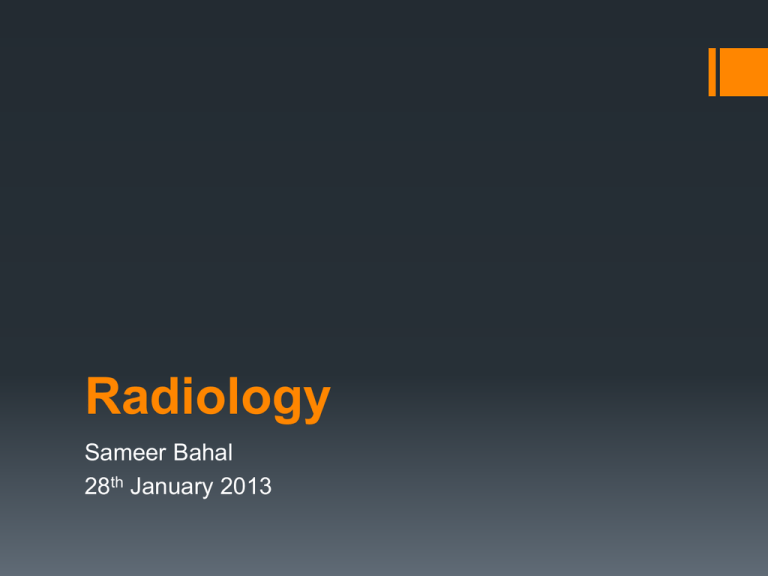
Radiology Sameer Bahal 28th January 2013 Content Chest X –Rays Abdo X-rays, CT Head, Case 1 • A 34-year-old woman, immigrant from Eastern Europe, • Complaints of vague chest discomfort 5 days after an upper respiratory tract infection. • Not a smoker • BCG vaccination as child. • Physical examination is normal. • PPD is 10-mm induration • Induced sputum for acid-fast bacilli is negative. Where is the mass? Case 2 25 year old with sudden onset chest pain Case 3 80-year-old male smoker with history of COPD. Presents with lower chest pain and worsening of shortness of breath. PH 7.30, CO2 3.6 Types of consolidation Case 4 73 year presents with 1 week history of increased drowsiness. Recently started feeling Nauseous and loss of appetite. History of stroke and AF DH: Warfarin CT vs MRI MRI is better for: Soft tissue (ligaments) Spine Younger Patients Cerebellar Imaging Case 5 70 yea old patient, longstanding history of HTN, AF, Diabetes, CRF and Dementia. Admitted after fall with increasing confusion. On Examination Chest Clear, Heart Sounds: I + II + ESM, Abdo: SNT, BS present AMTS: 3/10, (Normally 7/10) Bloods Normal Normal Pressure Hydrocephalus •Triad of: –Gait Disturbance –Dementia –Urinary Incontinence •Diagnosis –CT scan (enlarged ventricles) Case 6 30 year old admitted with headache and confusion Hematoma type Epidural Subdural Location Between the skull and the dura Between the dura and the arachnoid Involved vessel Temperoparietal locus (most likely) - Middle meningeal artery Frontal locus - anterior ethmoidal artery Bridging veins Occipital locus transverse or sigmoid sinuses Vertex locus - superior sagittal sinus Symptoms Lucid interval followed by unconsciousness Gradually increasing headache and confusion CT appearance Biconvex lens Crescent-shaped Case 7 You are a busy on call F1 Doctor. A nurse bleeps you, she has inserted an NG tube and wants to check the position. Step 1, Check pH, Results: 6 Step 2, CXR Case 8 50 year old patient in hospital following MI. Develops SoB at night Acute Pulmonary oedema • Chest X-ray will show fluid in the alveolar walls, • Kerley B lines, • increased vascular shadowing in a classical batwing perihilum pattern, • upper lobe diversion (increased blood flow to the superior parts of the lung), • pleural effusions. In contrast, patchy alveolar infiltrates are more typically associated with noncardiogenic edema These are short parallel lines at the lung periphery. These lines represent interlobular s Kerley B Lines Case 9 4 year old lady Ms Amin presents to A+E with SoB. Pt unable to speak English Chest Exam: Inspiratory Crackles throughout Case 10 50 year old patient admitted with Nausea and vomiting. Recently developed severe abdo pain PHM, perforated duodenal ulcer, appendicitis. Case 11 60 year old Patient admitted with Abdo Pain. Not opened bowel for 4 days. Case 12 60 year old Patient admitted with Abdo Pain. Not opened bowel for 4 days. Recent history of weight loss, Smoker OE: Abdominal Distension Case 13 30 year old patient presents with sudden onset abdo pain. Multiple abdominal surgeries in the past. WCC 30, CRP 100, BP 85/60 HR 130, Sats 96% Room Air Management? Case 14 30 year old patient with Fibromuscular dysplasia. Has History of Uncontrolled Hypertension. Presents with history of lethargy and fatigue, with recent vomiting Bloods Na 145 K 6.3 Ur 21 Cr 430 GFR 15 What investigation of choice Case 15 46 year old Nigerian lady arrives in UK from Nigeria and visits A+E with Sob. 6 months ago she spent time with a ill relative who turned out to have active TB. Never had BCG While you see her she coughs up blood stained phlegm. Case 16 Case 17 44 year old man on ward History of Dementia, AF, Stoke, MI You are asked to see him at 0200 due to chest pain. Unable to give clear history. ABG: pH 7.36 O2 8.4 CO2: 5.8 WCC 11, CRP 30, (70), Hb 10.8 (11.6)
